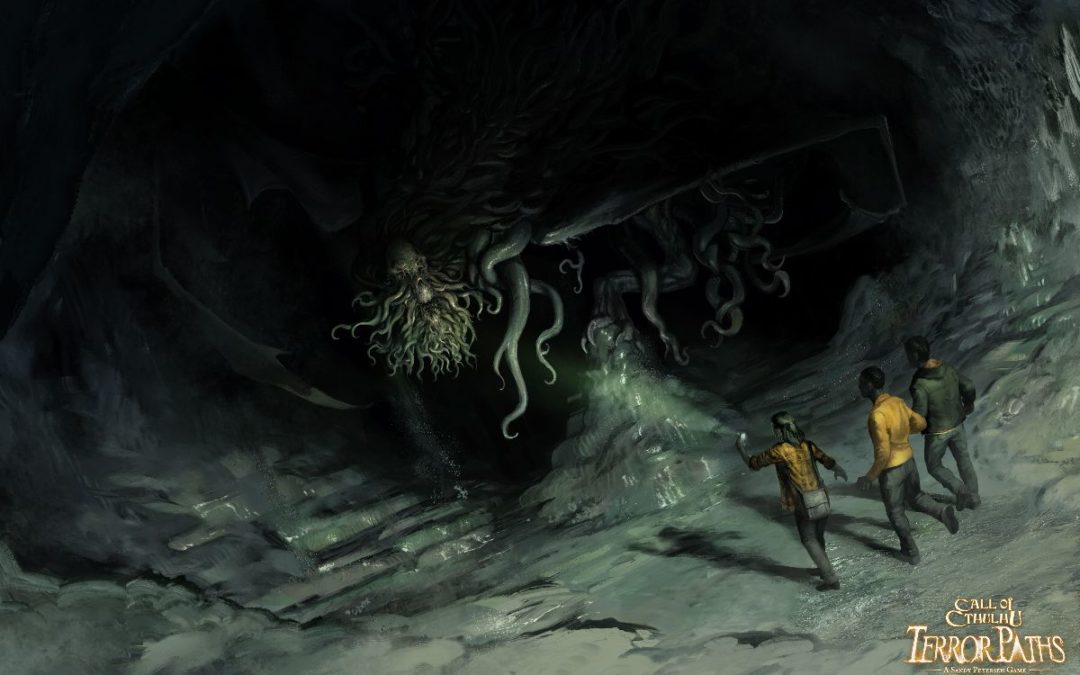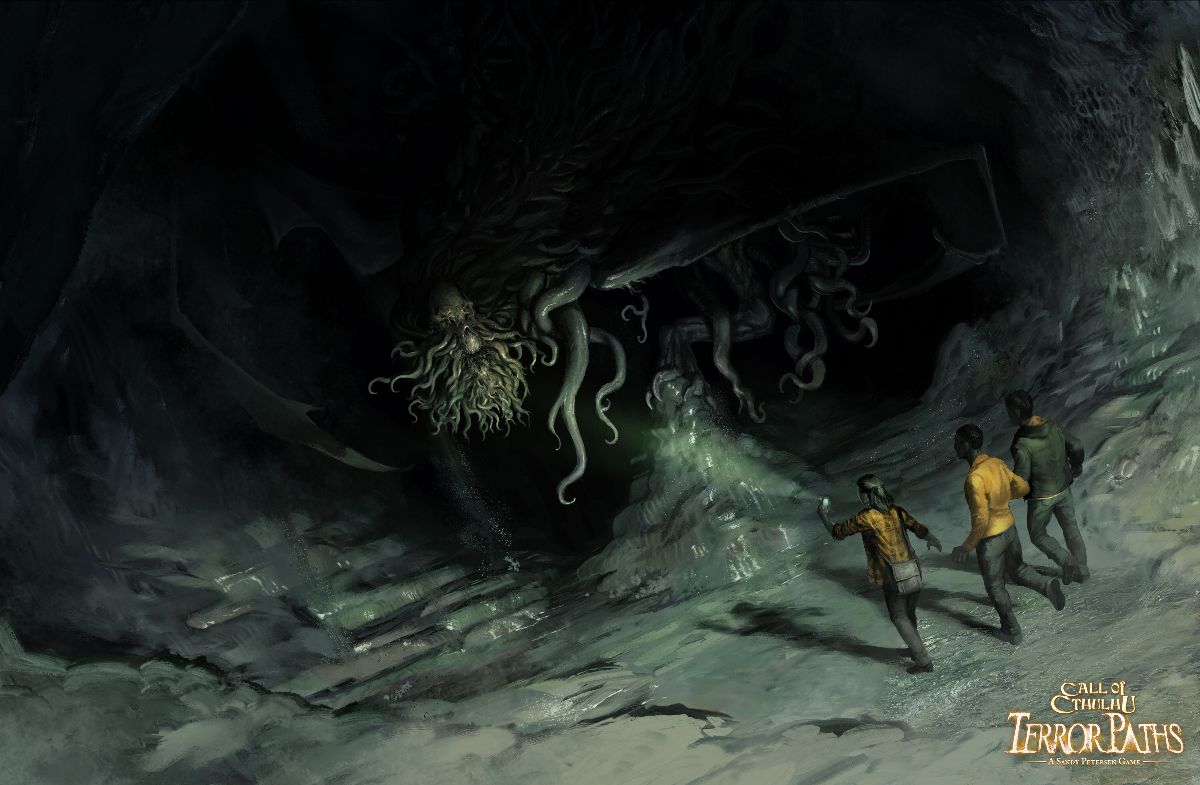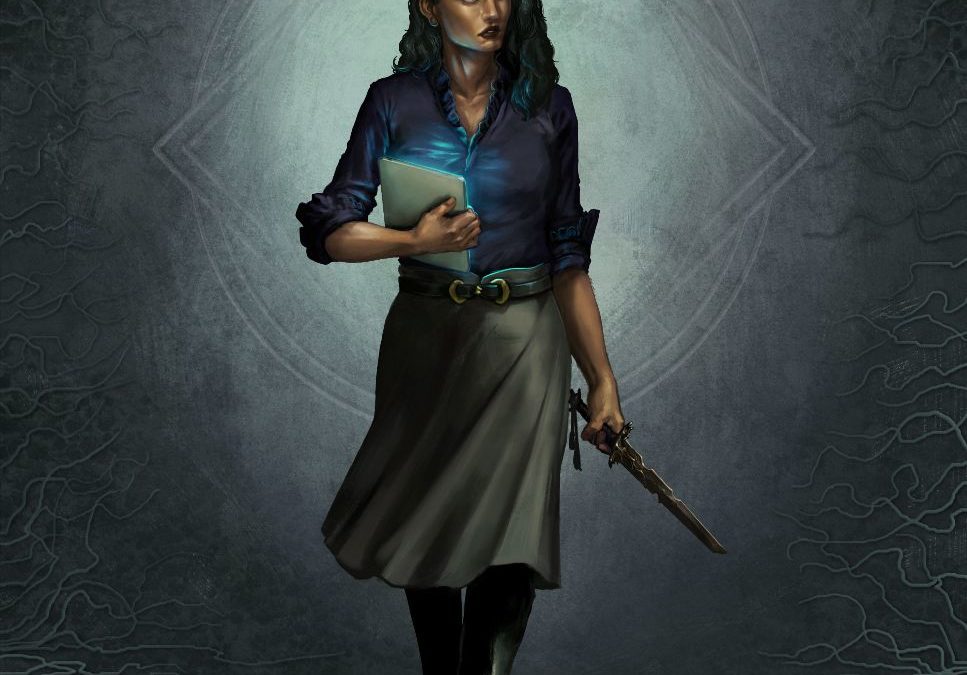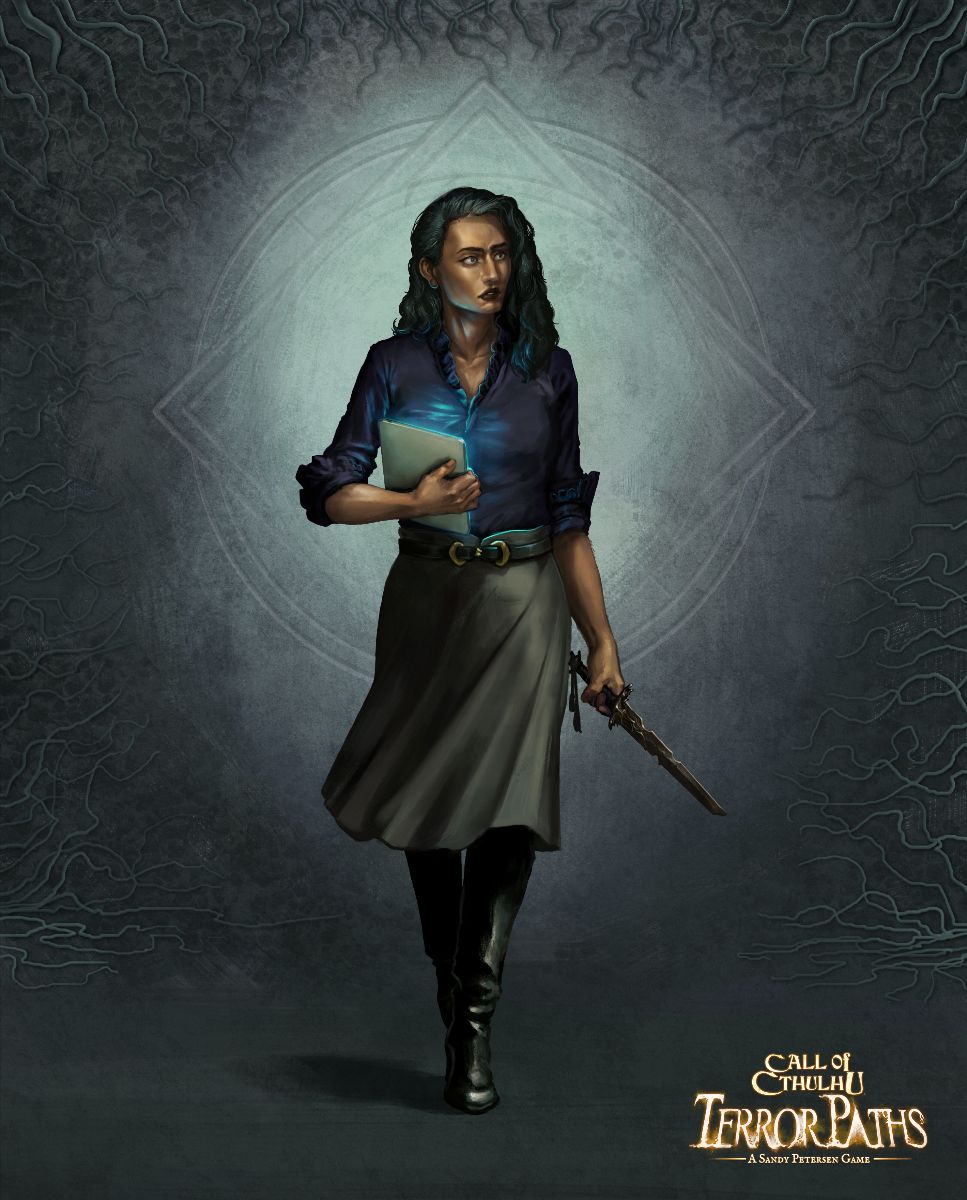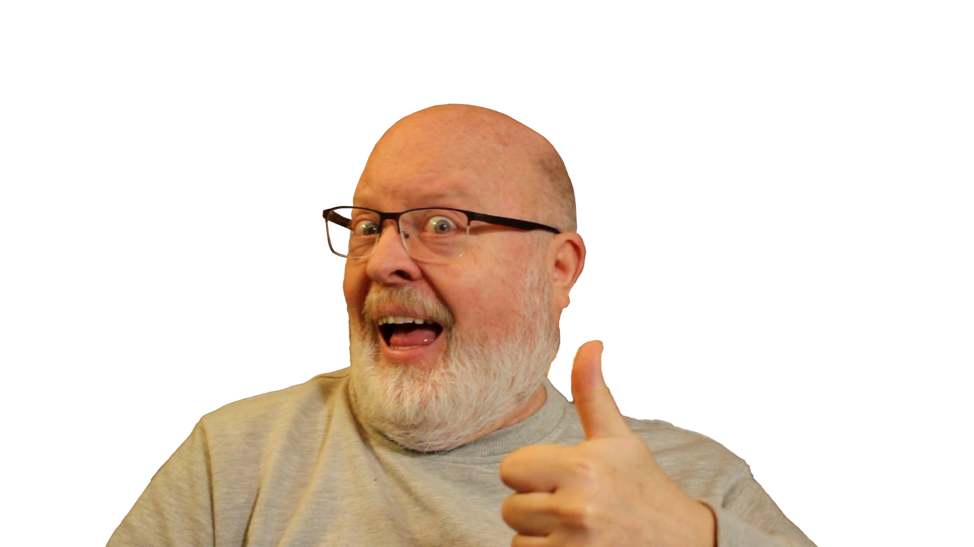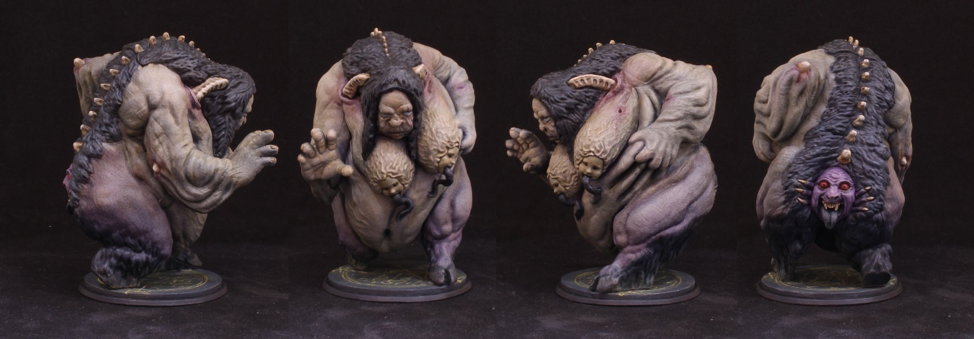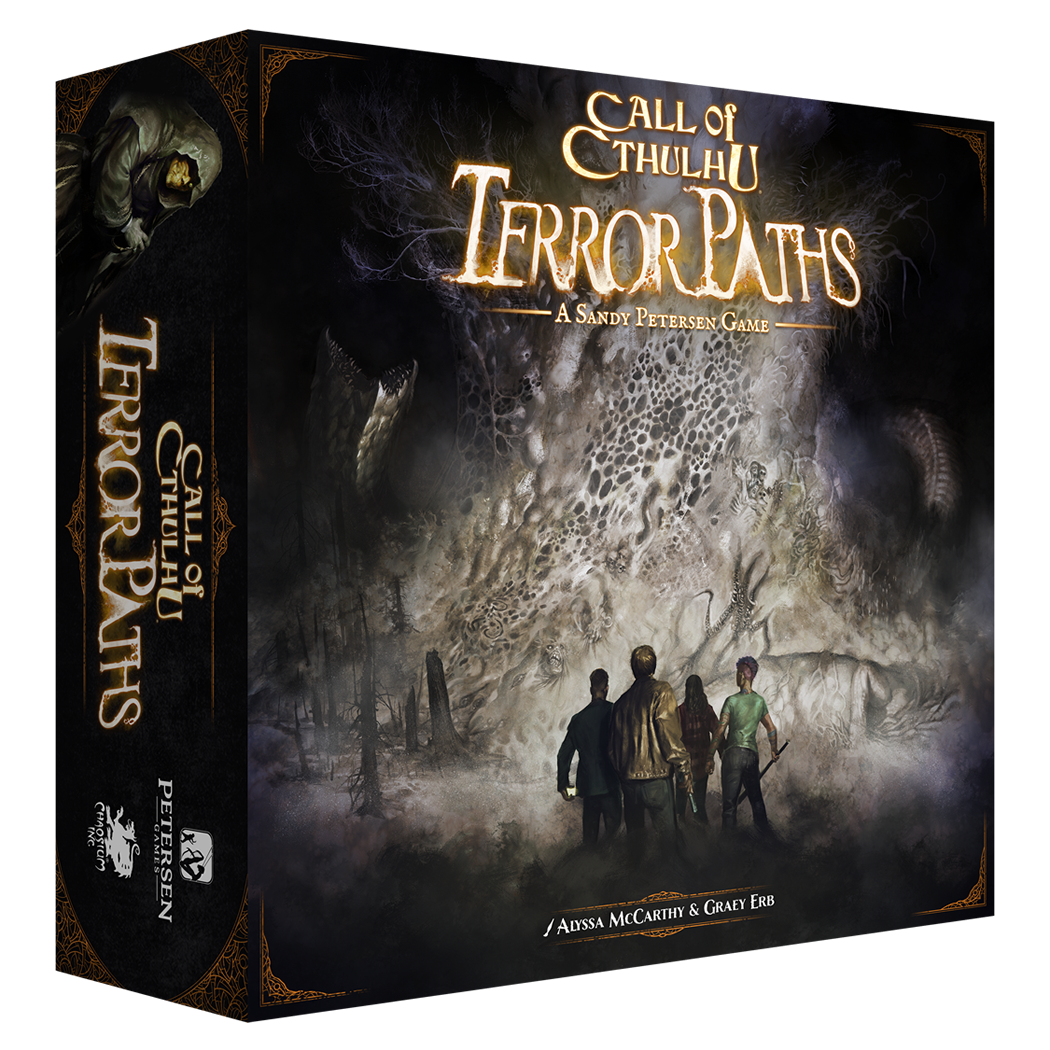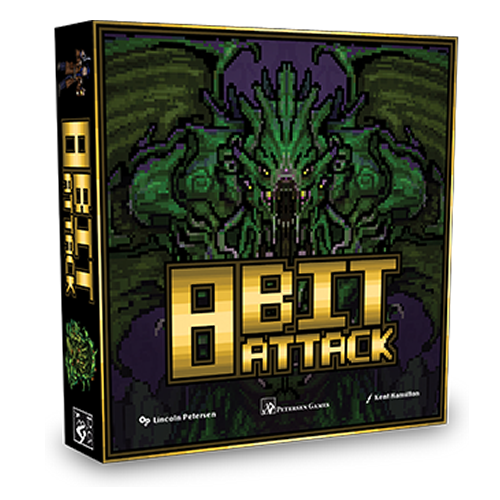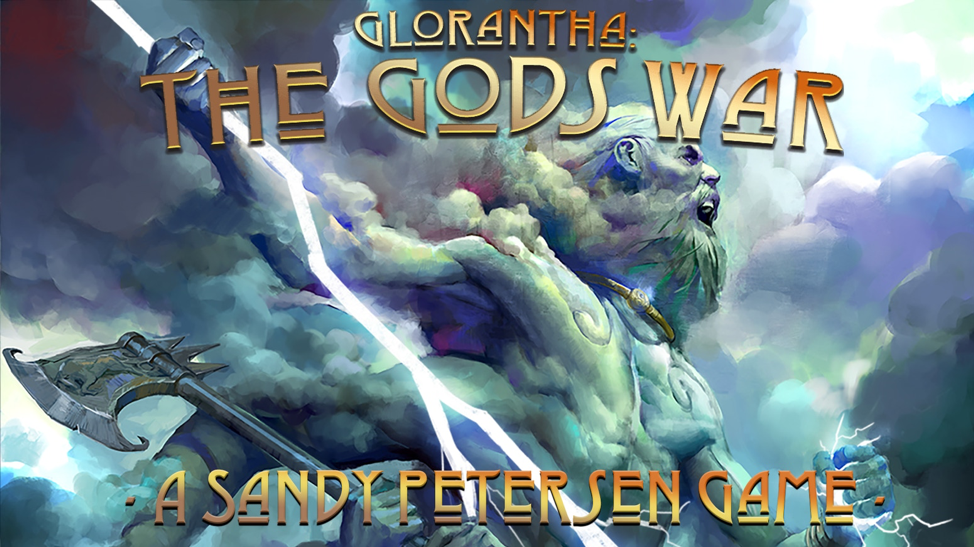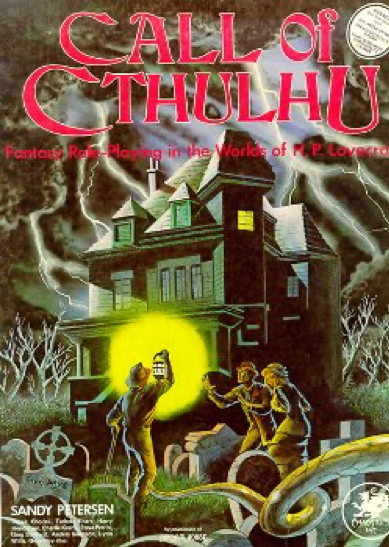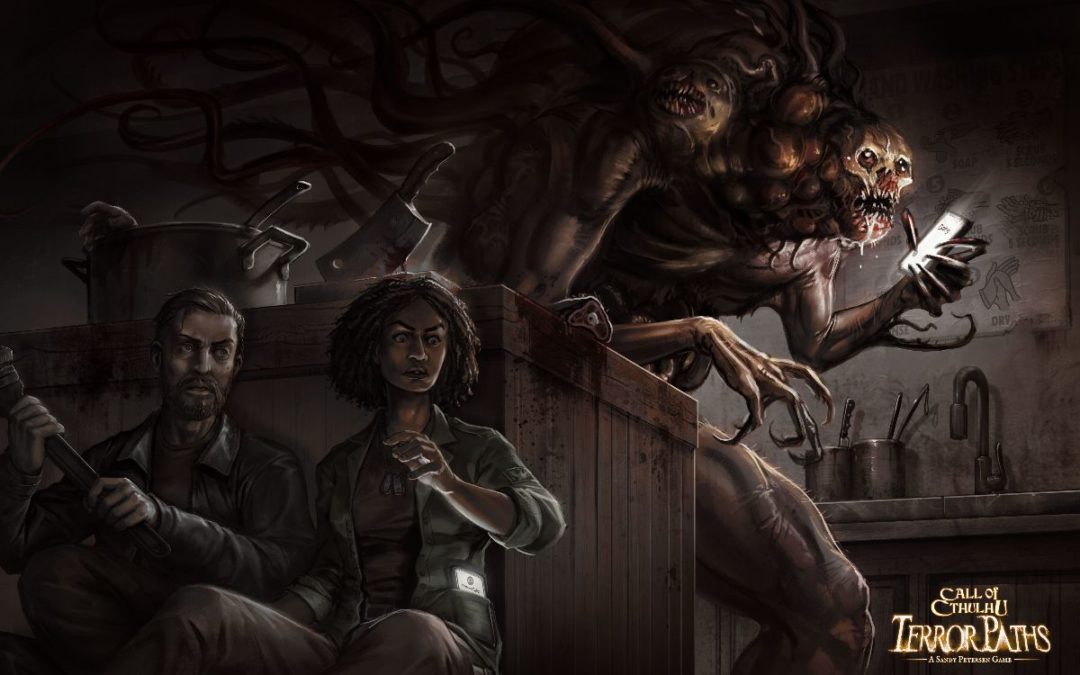
Scenario: It Bestirs
Call of Cthulhu Terror Paths is a tabletop cooperative experience for several players. All players take on the role of Investigators, who work together as a team. The game comes with two maps, each with wildly different scenarios. Coming in 2022.
Sandy thought you might enjoy a peek at the various scenarios that he designed for Terror Paths, his upcoming cooperative Call of Cthulhu board game. We’re also including his adventure gameplay notes.
Today’s scenario: It Bestirs …
Scenario: It Bestirs
You receive a frantic call from a Lodge member. “It’s all going wrong — people are changing, degenerating. The Blue ceremony must be stopped — it could destroy the world!”
The Investigators, Lodge members in good standing, are aware that a band of the Lodge’s more sinister members calls itself the Blue Campus.
You had thought they were just dilettantes, but apparently now they are using the Lodge’s facilities to do something awful. What could it be? You race to the Lodge to stop them.
Sandy’s Gameplay Notes
For the second adventure in the Carl Stanford at Bay campaign you find out that a secret sub-cult of Yog-Sothoth worshipers are trying to bring about the rise of their repulsive lord — the Opener of the Way.
You must search through the Silver Twilight Lodge while facing rapidly mutating Lodge members and trying to deal with the horror of the otherworld taints that are gradually infecting themselves!
As you progress, you must seek the Signs of Koth, the true Elder Sign, and the Opener of the Way glyphs — success reveals the final terror.
P.S. Sign up here to receive Sandy’s special newsletter for Terror Paths and get some exclusive previews and content.


